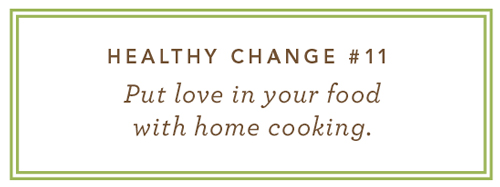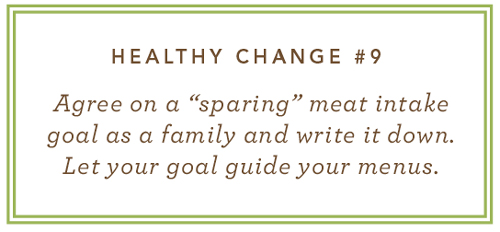Home Cooking
The quick answer: Want to live a long healthy life? You’ll have to cook—that’s the secret to health—or be on good terms with someone who cooks.
_______________________________________________________________________
Mom’s Cooking
Some stories are so full of wisdom they merit repeating, like this one: A few years ago my Mom observed with surprise that her friends had all stopped cooking. They had diligently reared their children but as their husbands retired from work, they resigned as the family chef. From then on, their daily bread came from a package, take out, or fast food. What was the result of this? They’ve all passed away, except one who suffers from dementia. Mom’s still cooking, living independently, practicing the prudence and thanksgiving she learned as a child of the Great Depression. She misses her friends but at her last drivers test they renewed her license for five years. She's not shy about her age anymore—94 is an accomplishment.
Our family had two special places that we all remember, despite the passing of time—Mom’s kitchen and Dad’s garden. I wrote a nostalgic post about Dad’s Garden that I invite you to read. If you want more peace in your life, Dad’s thoughtful advice is a good place to start.
Back to Cooking
The Beautiful Wife and I have discovered eggplant. We’ve been experimenting with recipes. My best reference is The Flavor Bible, a hefty tome that lists the spices traditionally used with foods. I refer to The Flavor Bible whenever I’m reinventing a recipe to make it healthier.
Visited our local Farmers’ Market last Saturday. It's a good place to learn. I was surprised to see Valencia oranges, best for juice, because we were still eating the winter Navels. But the winter was warm—there’s a drought in California—and the Valencias are ripening early.
The cauliflower looked good, as did the Brussels sprouts. I made a cheese sauce last night and we started on the cauliflower, with Skip’s Blackened Salmon, and a kale salad by the BW. Food is even more satisfying when it's wholesome.
Recipes
Last week I told about the English village of Todmorden that resolved to become self-sufficient with local food. They now have dozen of public gardens offering seasonal vegetables and are reinventing local, sustainable farming. In reading about Todmorden’s food reformation, one quote remains with me: “When we started, many homes didn’t have cookbooks.”
I see this rediscovery of real food and home cooking as the first, tentative completion of a greater cycle—for it was in this area back in the late 18th Century that the Industrial Revolution started. The Industrial Revolution changed everything. It was like the marriage vow . . . “for better and for worse.” So we are about saving what is better, like the home refrigerator, and reforming what is worse. The worst thing was the transfer of cooking from the home to the factory and the loss of cooking skills using real food, especially vegetables.
I love to reinvent traditional recipes by adding the good things from our modern food supply. My basic format is to replace sugar with healthy spices, incorporate whole grains, traditional fats, and feature natural foods. Because it’s still winter we’re eating lots of soup, using recipes from the post The Virtue of Soup. Last week we enjoyed Skip’s Black Bean Soup—recipe here. Isn’t it crazy, how I have the nerve to put my name on recipes people have cooked for millennia when I’ve only made a few changes? It makes me smile.
Past Cooking Posts
It might be a blessing to invest 10 minutes in looking over these past cooking posts:
2011: Home Cooking and In Praise of Spices
2012: The Love In Your Food
2013: The Joy of Cooking

Please comment: Please comment on what you are doing to advance home cooking, or tell of someone who helped you. Or share your idea on how to spread the word.
 Tuesday, March 11, 2014 at 10:32AM | by
Tuesday, March 11, 2014 at 10:32AM | by  Skip Hellewell |
Skip Hellewell |  4 Comments |
4 Comments |  29 References | |
29 References | |  Email Article
Email Article 















